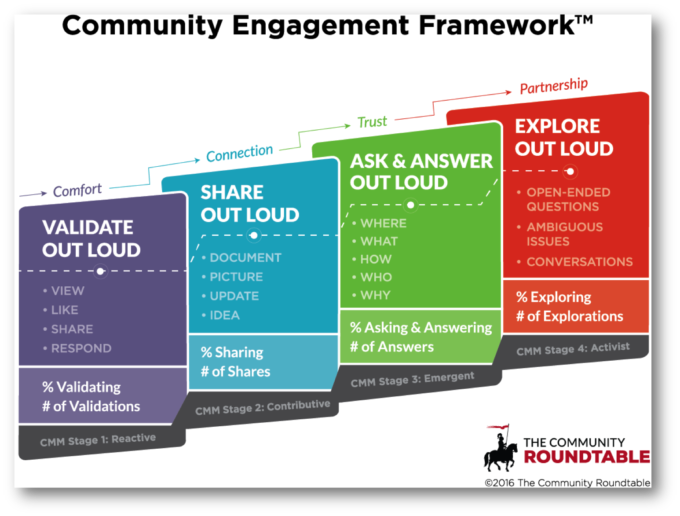
We know that empowered members engage, but just as a garden may appear inactive then suddenly shoot up with green, there is a slow progression towards empowerment that takes time, patience, and consistent watering.
After doing the tactical, strategical, and operational labor to create an environment of trust where members can be vulnerable and free to learn, you inevitably see a shift in behaviors. New members become established community mentors, users begin to champion your brand, and frequent dialogue results in new ideas.
It may seem as though your community blossomed overnight, or maybe it feels like you will never get that push over the hill and onto the next stage. Yet, inevitably, community strategy leads to outcomes. Are you prepared for the next leg of the journey? How do you ensure that your engagement strategy fits the needs of your maturing community?
One thing I’ve observed is that no matter how long it takes, change feels sudden. Many CM’s are (understandably) laser-focused on the daily tasks of community management that drive behavior change, so when those changes manifest, they can appear to have sprouted overnight.
Whether you are navigating changes in your community or beginning to see the signs of maturity, it may be time to review your engagement goals.
Every community will look different when fully matured. However, tools like the Community Engagement Framework help us to benchmark success based on standard definitions. How you define success should be based on your community’s shared purpose and values.

That may mean that you prioritize questions and answers over exploratory behaviors. Doing so doesn’t necessarily mean your community is not successful or networked if it is a strategic decision.
For example:
In communities where the main focus is customer support and with the primary objective to reduce resolution times and decrease support costs, you may find more value in narrowing your engagement focus to questions, answers, or searches.
It isn’t automatically beneficial to check all the engagement boxes when you have a specific need to address.
In contrast, in communities of practices, such as TheCR, we have a broader focus ( to support all of you with resources and tools in your communities!) and our engagement strategy reflects that through an emphasis on compounding behaviors such as sharing and asking questions. Giving answers and participating in a complex, open-ended dialogue.
In this new stage of community, a new kind of work begins. You are no longer building; you are refining an established structure.
What questions are relevant in the stage? How can you adjust your metrics, programming, and strategy to level up with the needs of your community? Are the behaviors you see most, the behaviors you want to promote?
TheCR team is also pondering the next phase of our work, being in our 10th year of commitment to community management research and practice.
Some steps we’ve taken include revisiting some of our core models, such as the CMM, and re-evaluating our shared purpose and values. Going through this process of refinement also requires CM’s to be vulnerable with their community.
“Things have changed a lot. We’ve learned a lot. It’s time for a change.” – Rachel Happe, TheCR
Asking trusted community members for input when you are thinking of making changes, considering revising your approach or dropping a program can help take the pressure off while also giving you insight into what the community sees as valuable in the moment.
Is your community in a stage of maturity, or approaching it? What tools and processes are you using to make sure your community strategy continues to level up along with your community?
